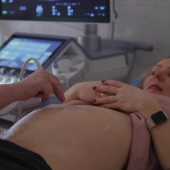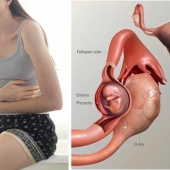If you are pregnant, high blood pressure can cause problems for you and your unborn baby. You may have had high blood pressure before you got pregnant. Or you may get it once you are pregnant - a condition called gestational hypertension. Either one can cause low birth weight or premature delivery of the baby.
Pregnancy-induced hypertension (PIH) affects approximately one out of every 14 pregnant women. Although PIH more commonly occurs during first pregnancies, it can also occur in subsequent pregnancies. PIH is also more common in pregnant teens and in women over age 40. Many times, PIH develops during the second half of pregnancy, usually after the 20th week, but it can also develop at the time of delivery or right after delivery.
Who is at risk of developing PIH?
- Is under age 20 or over age 35
- Has a history of chronic hypertension
- Has a previous history of PIH
- Has a female relative with a history of PIH
- Is underweight or overweight
- Has diabetes before becoming pregnant
- Has an immune system disorder, such as lupus or rheumatoid arthritis
- Has kidney disease
- Has a history of alcohol, drug, or tobacco use
- Is expecting twins or triplets
If PIH is mild, it can be treated at home. If you have been diagnosed with PIH and your doctor recommends home treatment, you will need to maintain a quiet, restful environment with limited activity or bed rest on your left side.
It is important that you follow the diet and fluid intake guidelines from your health care provider and maintain your scheduled appointments. Your perception of fetal movement every three hours is also important. Any changes need to be reported to your health care provider immediately.
If PIH becomes worse, you will need to be admitted to the hospital where you can be closely monitored. Your health care provider will work with you to maintain the health of you and your baby. In severe cases, the baby may have to be delivered. High blood pressure is treated with medication, and magnesium is given through an IV to prevent seizures.
- 207 views













